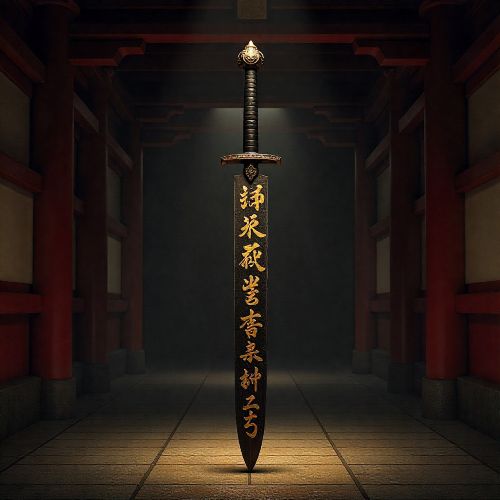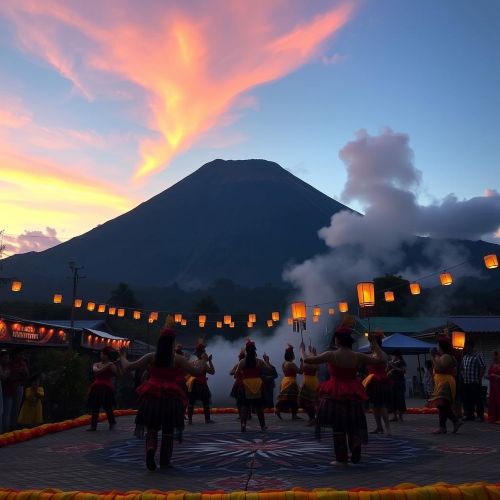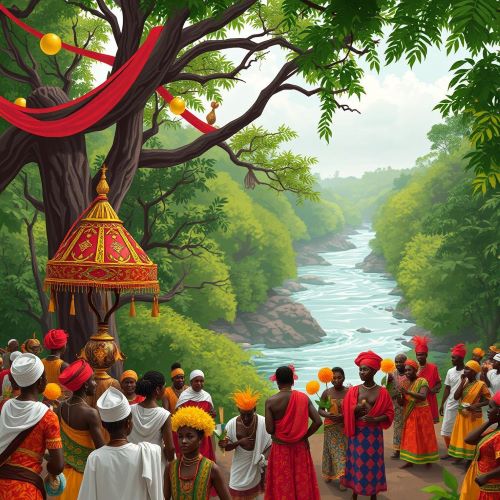Beltane : Festival of Renewal
At a glance
| Description | |
|---|---|
| Location | Ireland, Scotland, Isle of Man |
| Country | United Kingdom, Ireland |
| Dedicated To | Belenus |
| Duration | 1 day |
| Time of Year | May |
Introduction
Beltane, observed on May 1st, is one of the four great Gaelic seasonal festivals, alongside Samhain, Imbolc, and Lughnasadh. Rooted in Celtic tradition, it heralds the start of summer, celebrating fertility, fire, and the renewal of life. The word comes from the Old Irish Beltene, meaning “bright fire,” a reference to the great bonfires once lit in honor of the sun god Belenus. These sacred flames were believed to protect livestock, bless crops, and drive away harmful influences.
Over time, Beltane has transformed, weaving together strands of ancient mythology, rural customs, and modern Pagan revival. While its historical practices reflect the concerns of agrarian communities, today it is also embraced as a celebration of connection to nature, love, and the cycles of the earth.
Connection with Mythology
Beltane is steeped in Celtic mythology, embodying a moment when the veil between worlds is thin and the influence of deities and spirits is close at hand. Central to its symbolism is Belenus, the radiant Celtic god of the sun, healing, and vitality. His association with light and warmth made him a natural guardian of Beltane, where fire rituals were performed in his honor.
The Tuatha Dé Danann, a race of powerful deities in Irish myth, are also tied to Beltane. Stories describe their arrival in Ireland on this very day, a symbolic reminder of divine renewal and transformation. Other legends speak of Beltane as a time of encounters with the Sídhe—fairy folk who might bless or trouble mortals. Offerings were left at sacred wells and groves to secure their goodwill.
Another powerful mythological motif is the union of the May Queen and the Green Man, archetypes of feminine earth and masculine vitality. Their sacred marriage symbolizes the fertility of the land, ensuring crops would grow and livestock would thrive. Beltane thus reflects a cosmological balance: light conquers darkness, fertility overcomes barrenness, and the community enters the abundant half of the year.
Main Activities
Beltane’s rituals have always centered on fire, fertility, and the interconnectedness of people with nature. The most iconic practice was the lighting of bonfires, often in pairs. Cattle were driven between these fires as a protective blessing before being taken to their summer grazing lands. People themselves leapt over the flames or walked around them, believing this would bring prosperity, health, and good fortune.
Maypole dancing became another enduring Beltane custom, though it is most strongly recorded in later folk traditions. The Maypole, crowned with flowers and wrapped with colorful ribbons, represented both the world tree and the union of masculine and feminine forces. Dancers weaving the ribbons around the pole enacted a ritual of harmony and fertility.
Other activities included feasting on fresh dairy products, seasonal greens, and honeyed treats that marked the return of abundance. Temporary unions known as “greenwood marriages” were sometimes made in the woods, symbolizing the sacred partnership of the May Queen and Green Man. These were often joyfully renewed the following year.
In addition to human festivities, offerings of milk, flowers, and bread were made to nature spirits at wells, rivers, and sacred groves. This reflected a belief that good relations with the Otherworld would ensure balance and protection. Today, modern Pagan and Wiccan communities continue these practices, often reinterpreting them with ecological and spiritual emphasis.
Importance in Cultural History
For ancient Celtic societies, Beltane was more than a festival—it was a vital turning point in the year. As a pastoral community event, it marked the seasonal movement of cattle from lowland winter pastures to higher summer grazing lands. Ensuring the safety and fertility of livestock through fire rituals was crucial for survival, as cattle were central to wealth, trade, and sustenance.
Beltane also had social and political significance. In medieval Ireland, great assemblies were held at Tara around this time, where laws were proclaimed and alliances reinforced. These gatherings were as important for fostering kinship and trade as they were for ritual purposes.
Even after Christianity spread through the Celtic lands, Beltane customs proved remarkably resilient. The church discouraged fire rituals, but many practices survived in folk traditions—such as May bonfires, fertility charms, and superstitions tied to May Day. Early Irish literature also preserves references to Beltane, highlighting its deep cultural roots and its importance as a turning point in both the agricultural and mythological year.
Today, scholars and cultural historians view Beltane as a window into the Celtic worldview, revealing how myth, ritual, and ecology were interwoven. Its endurance, even in adapted forms, speaks to its powerful role in shaping both community life and spiritual imagination.
International Appeal
Although Beltane originated within Gaelic and Celtic traditions, its themes have given it global resonance. The most prominent modern celebration is the Beltane Fire Festival in Edinburgh, Scotland, founded in 1988 by artists and folklorists. This event blends mythological storytelling, fire displays, and theatrical ritual, drawing thousands of participants and international visitors each year. While not a reconstruction of ancient rites, it channels the spirit of renewal, community, and connection to nature that defines Beltane.
Wiccans and modern Druids around the world celebrate Beltane as one of the eight Sabbats in the Wheel of the Year. Rituals often include the lighting of fires, crowning a May Queen, Maypole dances, and offerings to deities or nature spirits. Many groups use the occasion to celebrate love, creativity, and personal renewal, making Beltane one of the most joyful Pagan festivals.
Beltane’s revival has also found a place in eco-spirituality. Its rituals of honoring the land and its cycles align with modern movements for sustainability and environmental awareness. Communities often use Beltane as a moment to reconnect with natural rhythms, plant gardens, and celebrate biodiversity.
Beyond Pagan circles, Beltane has captured popular imagination through literature, art, and tourism. Its imagery of bonfires, flower crowns, and mystical unions appeals to those seeking a deeper connection to seasonal cycles. Though debates about cultural accuracy and appropriation continue—particularly when non-Celtic symbols are blended in—its international popularity demonstrates the enduring relevance of this ancient celebration.
Source
Green, M. (1995). Celtic Goddesses: Warriors, Virgins and Mothers. British Museum Press.
https://www.britishmuseumshoponline.org
MacKillop, J. (2004). Dictionary of Celtic Mythology. Oxford University Press.
https://global.oup.com/academic/product/dictionary-of-celtic-mythology-9780198698691
Ó hÓgáin, D. (2006). The Lore of Ireland: An Encyclopaedia of Myth, Legend and Romance. Boydell Press.
https://boydellandbrewer.com
Tokarev, S., & Shkuro, V. (2024). The main Celtic holidays as a cultural heritage of modern Ireland.
Turunen, A. (1992). Festival as Ritual – Rituals in Festival: Symbolic Expressions in Modern Finnish Local Festivals.
Vysotska, O. (2020). THE INFLUENCE OF CELTIC MYTHOLOGY ON THE TALES OF EUROPE.
Weir, L. (2016). Bealtaine in Irish and Scottish Place-names.
Wolf, G. (2006). An examination of Samhain and Beltane rituals in contemporary pagan practice.
Frequently Asked Questions
Lorem ipsum dolor sit amet, consectetur adipiscing?
Lorem ipsum dolor sit amet, consectetur adipiscing elit. Praesent convallis vestibulum justo, ac tincidunt nunc vehicula quis. Nullam id dolor quis orci malesuada feugiat. Curabitur aliquet libero at urna ullamcorper, ac ultricies nulla dapibus.
Lorem ipsum dolor sit amet, consectetur adipiscing?
Lorem ipsum dolor sit amet, consectetur adipiscing elit. Praesent convallis vestibulum justo, ac tincidunt nunc vehicula quis. Nullam id dolor quis orci malesuada feugiat. Curabitur aliquet libero at urna ullamcorper, ac ultricies nulla dapibus.
Lorem ipsum dolor sit amet, consectetur adipiscing?
Lorem ipsum dolor sit amet, consectetur adipiscing elit. Praesent convallis vestibulum justo, ac tincidunt nunc vehicula quis. Nullam id dolor quis orci malesuada feugiat. Curabitur aliquet libero at urna ullamcorper, ac ultricies nulla dapibus.
Lorem ipsum dolor sit amet, consectetur adipiscing?
Lorem ipsum dolor sit amet, consectetur adipiscing elit. Praesent convallis vestibulum justo, ac tincidunt nunc vehicula quis. Nullam id dolor quis orci malesuada feugiat. Curabitur aliquet libero at urna ullamcorper, ac ultricies nulla dapibus.
Lorem ipsum dolor sit amet, consectetur adipiscing?
Lorem ipsum dolor sit amet, consectetur adipiscing elit. Praesent convallis vestibulum justo, ac tincidunt nunc vehicula quis. Nullam id dolor quis orci malesuada feugiat. Curabitur aliquet libero at urna ullamcorper, ac ultricies nulla dapibus.









